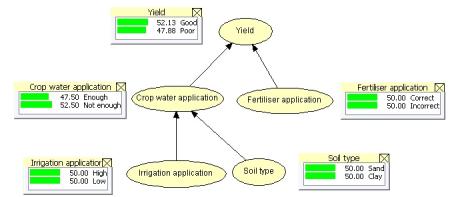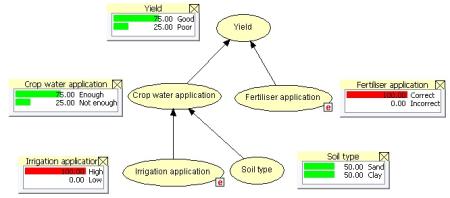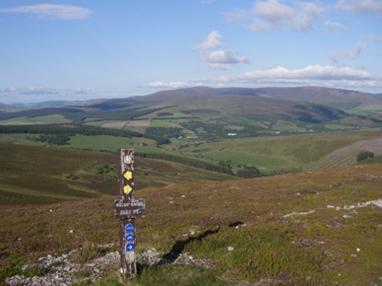
Resource description:
A Bayesian Belief Network (BBN) is a framework that uses a graphical representation to show the flow of information in a system. It has nodes or vertices to represent variables which can include observed quantities, latent (unobserved) quantities, expert opinion, model outputs, or unknown parameters. There are links or edges joining parent nodes to child nodes. The difference between this and other similar frameworks is in the use of conditional probabilities to express the relationships between nodes. This allows the building of complex networks from simple segments and it enables uncertainties to be assessed at every stage, so the outcomes of the network reflect the weight of the evidence that supports the conclusion.
Author/Contact:
HUGIN - Centre for Ecology and Hydrology
Images
Requirements:
- The data requirements are basically linked to the structure and to the purpose of the BBN. All types of data can be used for developing a BBN, but internally the nodes will usually have a discrete set of states and the information about the links is held
- The BBN structure can be set up purely from expert opinion, and that is probably the most likely route for most case studies. Most networks are then developed iteratively, and if the nodes change during these iterative steps then so will the data require
Advantages:
- The facility of using a variety of information types including expert opinion, experience and historical data to manage and represent uncertainty.It can also learn from new data by updating its probabilities and so it always reflects the current state of
- The graphical interface provides an attractive way of presenting the arguments to stakeholders. It helps to focus ideas during network development and encourages transparency about the system structure.
- The networks are very good for quickly exploring options and building an understanding of the potential outcomes of scenarios, particularly useful within a participatory setting.
Constraints:
- The major constraint on any ecosystem services assessment is the availability of information (data, model simulations, etc.) at the correct spatial and temporal scales.
- The nodes in BBNs usually operate with categorised rather than continuous variables. This is not normally a limitation to developing an effective network and there are functions to convert continuous measurements to the chosen discrete states.
- Feedbacks within any one time instance of the BBN are not allowed, but the use of time slicing (i.e. repeating the BBN at a series of points in time) can overcome some of this problem.
Licence:
- Commercial
Development stage:
- Full, working product

